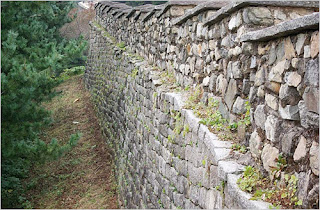Part of Imjin War
Date September 6, 1593
Location Chongju
Result Korean victory
Belligerents
Japanese Army Korean Irregular forces
Commanders and leaders
Konishi Yukinaga Hyojung, Jo Heon
Strength
5,000 (est.) 3,100
Casualties and losses
2,000 (est.) 900 (est.)
The Battle of Chongju was one of the first Korean victories on land during the Imjin War. Also, it was won by the Korean irregular volunteers that included Buddhist warrior monks as well.
Jo Heon, one of the most well known Korean irregular leaders, along with Hyujong, who led the Buddhist forces decided to attack Chongju. Chongju was captured by the Third Division of the Japanese army under Kuroda Nagasama in the opening battles of the Imjin War.
Chongju was important because it provided as an important center for transporting supplies to Japanese forces in the north. Also, Chongju was one way to Hanseong (Seoul). Chongju was under the general of Hachisuka Iemasa (1558-1638).
With information that it was lightly guarded, the Korean irregular army decided to recapture Chongju from the Japanese. Capturing Chongju would cut Japanese communication lines and provide a stepping stone to southern Korea where the invasion of Jeolla Province could be stopped.
[edit]Battle of Chongju
The Korean irregular forces attacked Chongju, bringing ladders on all the gates. Fierce melee fighting ensued and both sides lost soldiers. Hachisuka finally forced the Koreans to retreat after fire from arquebuses, which the Koreans were terrifed of. Hachisuka believed the Koreans were gone. No more attempts to attack Chongju was made.
Instead, Jo Heon took several soldiers to a hill and lit many fires on stakes. The Koreans set up flags as well. This was done at night, and the Japanese were completely fooled into believing that the Korean army was very large. Hachisuka immediately retreated from Chongju. The Korean irregulars marched into Chongju with a victory. This also boosted the morale of the surrounding Korean forces in the area as well since this was one of the first land victories for the Koreans.
[edit]Aftermath
Despite the victory, Korean irregular leaders argued over the credits for the battle and relationships between the Buddhist monks and irregulars fell. With Chongju secured, Korean forces were able to attack Japanese positions but failed. The internal fighting led to the defeat and total annihilation at Kumsan.
http://home.koreapr.jp/ktt_local/571
清州城奪還祭り(チョンジュソン タルファンチュクチェ)
清州城奪還祭りは壬辰倭乱の時倭軍に奪われた清州城を取り戻したことを記念する文化芸術祭りです。清州城を奪還した1592年、陰暦8月1日を陽暦に変えて毎年9月6日から3日間行われます。 祭り期間には清州中央公園、成案道、城奪還広場、無心川一帯で多様な行事が進行します。主な行事に義兵戦跡地巡礼、記念流灯制、追慕大祭(慰霊祭)、道遊び、幢竿芸術祭、総合芸術祭などがあります。壬辰倭乱(文禄・慶長の役)当時、大規模陸戦で初めて勝利した清州城の奪還が市民祭り形態で再現されます。清州城は壬辰倭乱が起きて数ヶ月の1592年7月倭軍に奪われ、義兵長朝憲、パク・チュンムと僧兵長ヨンギュ大使が義兵と僧兵3500人余りを糾合して8月2日(当時陽暦基準9月6日)激しい戦闘の末に取り戻されたと記録されています。清州城の奪還は壬辰倭乱初期の日本軍との大規模陸地戦闘で初めて勝利し、奪われた城を取り戻した戦闘として記録されています。
上党山城(상당산성:Sangdangsanseong:サンダンサンソン)
청주상당산성 옛길
상당산성 성벽 상당산성 외경 상당산성 입구 사적 제212호. 면적 12.6ha, 성 둘레 4,400m. 크기가 일정하지 않은 석재로 수직에 가까운 성벽을 구축하고 그 안쪽은 토사(土砂)로 쌓아올리는 내탁공법(內托工法)으로 축조하였으며 높이는 4.7m이다. 동·서·남방 3개소에 성문을 두었는데, 남문은 무사석(武砂石)으로 홍예문을 만들고 그 위에 목조 문루(門樓)를 세웠다. 지금은 석축 부분만 남아 있고, 성문의 높이는 3.5m, 너비는 4.2m이다. 동문과 서문도 역시 문루가 있었으며 성문은 무사석으로 네모지게 축조하였는데 높이 2.7m, 너비 2.8m이다. 동문과 남문 부근에 1개소씩의 암문(暗門)이 있고 동남방에 수구(水口)가 있었으나 지금은 여기에 저수지가 만들어져 있다. 성내에는 동장대(東將臺)와 서장대(西將臺)의 터가 남아 있다. 1996년 현재 이 성내에는 50여 가구가 살고 있다. 읍지(邑誌)에 의하면 이 산성은 1716년(숙종 42) 고지(古址)에 의거하여 석축으로 개수하였다고 하며, 남문 등의 성문·성벽에 당시의 공사관계자들의 이름과 관직명 등이 새겨져 있다. 남문의 문루는 1977년 복원되었다.
http://roks821.egloos.com/8005122
roks821.egloos.com/8005122 덧글수 : 0 199
상당산성 사적 212호 충북 청주시 조선시대 상당산 계곡을 둘러 돌로 쌓아 만든 산성으로 백제 때 부터 이미 이곳에 토성이 있었던 것으로 짐작되는 곳이다. 『삼국사기』에는 통일신라 초기에 김유신의 셋째 아들이 서원술성을 쌓았다는 기록이 있는데 이때 쌓여진 것이 아닌가 추측되기도 한다. 상당이란 이름은 백제 때 청주목을 상당현이라 부르던 것에서 유래한 것이다. 지금의 성은 임진왜란 때에 일부 고쳤으며 숙종 42년(1716)에 돌성으로 다시 쌓은 것이다. 성벽은 네모나게 다듬은 화강암으로 쌓았으며, 비교적 잘 남아있으나 성벽 위에 낮게 쌓은 담(여장)은 전혀 남아있지 않다. 성 안에 5개의 연못과 3개의 사찰, 관청건물, 창고 등이 있었는데, 현재는 문과 치성이 남아있다. 정상에 오르면 서쪽으로 청주·청원 시내가 한 눈에 내려다 보여 서쪽 방어를 위해 쌓여진 곳이었음을 알 수 있다.
http://blog.ohmynews.com/bizwe/228206
Fortaleza Sangdangsanseong (상당산성)
http://good.mond.jp/handora/tonman/2012/05/19/%E6%B8%85%E5%B7%9E%E3%83%BC%E4%B8%8A%E5%85%9A%E5%B1%B1%E5%9F%8E/
上党山城という名称は三国時代、百済の上党県から由来し、周囲の長さが4kmを越える巨大な石垣の城です。統一新羅初期にキム・ユシンの三男、元貞公が造り、壬辰倭乱の宣祖29年大々的に修築後、1716年に石城に改築されました。「太王四神記」第9話でテジャ城として登場し、この城門前で玄武が目覚めます。「テジョヨン」では安市城として登場!いつも石垣が延々と続く安市城は壮観でした。大好きなヤン・マンチュン将軍思い出します!
西門から韓屋村(ハノクマウル)に降りる坂道があります。山城マウルです。
http://blog.livedoor.jp/mt221414/tag/%E4%B8%8A%E5%85%9A%E5%B1%B1%E5%9F%8E
・「鄭芝溶(정지용:チョン・ジヨン、てい・しよう)」の生家とそれに隣接する記念館















No comments:
Post a Comment